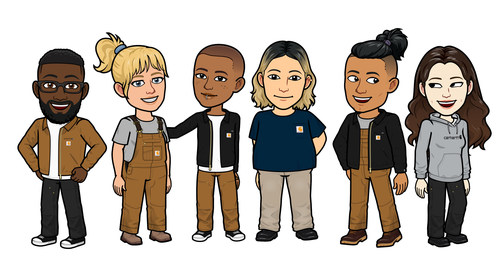Are social networks starting to cool on Web3 projects?
Earlier this week, Snapchat announced that it would be cutting over 1,000 jobs, as it works to counter losses due, essentially, to lower than anticipated ad spend. In order to do this, Snap explained that it would be focusing on three specific areas to hone in future development.
As per Snap CEO Evan Spiegel:
“We are restructuring our business to increase focus on our three strategic priorities: community growth, revenue growth, and augmented reality. Projects that don’t directly contribute to these areas will be discontinued or receive substantially reduced investment.”
Which makes sense – community and revenue growth provide immediate business benefit, while AR remains Snap’s biggest opportunity moving forward, and is the area that it’s continued to lead the way on.
But that also means that one particularly interesting area of Snap’s business is being cut as part of the reshuffle.
As per The Block:
“Snapchat parent Snap Inc. appears to be shuttering its web3 team in light of a company-wide restructuring plan.”
Snap’s Web3 division had been looking at different applications of evolving technologies in a Snapchat context, including AR collaborations with various well-known NFT projects, digital clothing and items for avatars, and potentially, and the capacity to use NFTs as face-changing Lenses.
Eventually, Snap would have theoretically also been looking to facilitate more direct connection with NFT projects, so that expansions like this would be native to Snap itself.
But that, seemingly, now won’t go ahead – or at least, not to the extent that it likely could have via Snap’s own, dedicated Web3 initiative.
Indeed, one of the leaders of Snap’s Web3 division Jake Sheinman tweeted this following Snap’s announcement:
“After 4 years at Snap, today is my last day. As a result of the company restructure, decisions were made to sunset our web3 team. The same team that I co-founded last year with other pirates who believed in digital ownership and the role that AR can play to support that.”
So, seemingly, AR integrations were the main gist of Snap’s Web3 push, but given the crypto crash, and the declining interest in NFTs, it seems like this is no longer a priority for the app.
Is that a mistake?
This is the question many now have – what does Snap’s decision to step away from Web3 mean in the broader context of these new, connective, collaborative opportunities?
Really, it probably doesn’t mean a heap. Snap could still facilitate most of these projects via its existing AR tools and collaborations, in the same way that it works with movie studios, for example, to create AR tie-ins. It probably doesn’t need a dedicated Web3 team in this sense, as these processes, for the most part, are not unique to Web3 initiatives.
Where it does lead to more questions is around the next stage of digital product integrations, and the facilitation of such through Snap’s tools.
As noted, Snap has also been investing in digital clothing, with a range of high-profile brand partnerships on items for Bitmoji avatars.

That, theoretically, could be the ideal linking point for Web3 projects, with people creating their digital likeness on Snap that they could then use in the coming metaverse experience.
Bitmoji characters are already hugely popular as a form of digital expression, with Snap reporting last year that 200 million people use Bitmoji stickers every day. Given the connection that Snap users already have with their digital doppelgangers, it would make sense for Snap to use this as a jumping-off point to facilitate the sale of digital items, leaning into the Web3 shift – though the current Web3 team has seemingly been more focused on integrating real-world activations based on Web3 properties.
Which look great, and definitely enhance the community experience around Web3 projects. But they don’t directly translate into Snap’s core product, which is likely why Snap has moved away from such for the time being.
Because, again, NFT sales haven’t held up, with ongoing reports of scams, rug-pulls and exploits making people increasingly wary about investing in NFT art, aside from the broader crypto declines. Essentially, what the sector needs is more regulation and more defined rules around the sale of digital artworks to offer more protection – which then raises the question as to whether we even need NFTs in the first place.
You can buy digital art already, through existing tools and platforms that do adhere to trading and exchange rules, and offer more protection around such. NFTs offer an alternative pathway to digital ownership – but in their current form, that alternative is not as good as the processes that it’s largely seeking to replace.
Which is another reason why enthusiasm for Web3 initiatives is waning, and why Snap is likely not as interested as it had been – it’s not clear, right now, whether NFTs, as a process, even work, in a functional sense.
But the communities being formed around such are significant, and that does offer potential for new tie-ins and digital initiatives on platforms like Snapchat. The future of digital product ownership also offers significant potential in this respect, but right now, at this stage of development, the first wave of Web3 initiatives is increasingly looking like a pressure test, and they’re not, in general, standing up to scrutiny.
So while Snap is stepping away from Web3 projects right now, I doubt this will be a permanent move away from the potential of these new opportunities, and I don’t think it’s indicative of the broader view of Web3, in general.
It’s just that right now, as Spiegel says, this is not a priority, which, on balance, makes perfect sense.



